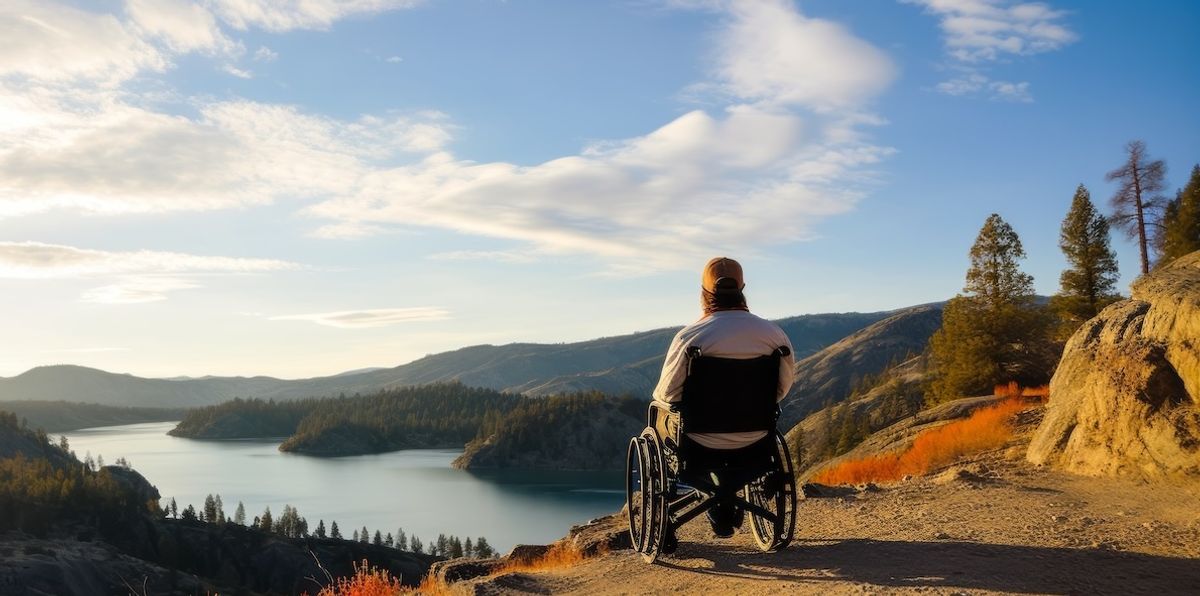The travel
and tourism industry is full of opportunity, giving travelers around the world
access to new destinations and cultural experiences that have the power to
change their perspectives about the world around them. But there’s just one
problem: These experiences aren’t accessible to everyone, particularly
travelers with physical limitations or neurological conditions such as autism.
However, there’s a growing movement to create more inclusive experiences across
all industries that open new travel opportunities and doors for those who are
impacted.
There’s no
better time to foster an open dialogue about what accessibility and inclusivity
means in the travel and tourism industry than World Tourism Day. Celebrated
every September 27 since 1980, World Tourism Day is designed to raise
awareness about tourism and how it affects different parts of our planet,
including environmentally, socially, politically and economically. While World
Tourism Day isn’t for a few more months, summer travel is already upon us, giving
us an opportunity to make a difference in the lives of travelers now–and make
powerful, beautiful experiences more accessible in a world that is ripe with
conflict and inequality.
Destinations
and organizations like TravelAbility are leading the charge, and most
importantly, they are making a difference. Here’s how destinations around the
world can create more accessible, inclusive travel experiences.
What do
travelers want?
Consumers in general are more prone to purchasing
products or services that align with their values–and travel is no different.
Travelers want to visit destinations where they know they’ll feel safe and
welcomed, and a recent Accenture survey revealed that
approximately three out of every five travelers want their travel providers to
share similar diversity and inclusion values. Often, diversity, equity and
inclusion in travel means creating inclusive experiences for every race, gender
or those who are part of the LGBTQ+ community. However, creating inclusive
experiences also means creating accessible
experiences.
Think about it this way: Currently, 87% of families with members on the spectrum
don’t travel due to a lack of sensory-friendly options. Given that an estimated
1% of the world’s population is on the
spectrum, approximately 75 million people are excluded from travel. Not only is
this a massive opportunity for the travel and tourism industry to open up new
experiences for a drastically underserved market, it’s also an opportunity to
bridge the gap so travelers with autism can experience the joy of travel.
Creating
accessible experiences
There’s a growing movement to raise awareness about increasing accessibility in
travel. According to a recent report, 45% of European destination marketing
organizations prioritize visitors with disabilities. While that’s an incredible
start, it’s simply not enough.
Subscribe to our newsletter below
Sojern Advisory Board
member and TravelAbility Board member, Stuart Butler, chief marketing officer of Visit Myrtle Beach, is an advocate for families with autism and is
continually finding ways to make Myrtle Beach more accessible to those with
different sensory needs. To do so, Stuart created Traveling the Spectrum, an
organization that helps families with autism experience travel. Traveling the
Spectrum recently filmed a six-part series that offers an
intimate glimpse into the lives of three families living with autism. The
series showcases their heartfelt journeys toward understanding, acceptance and
the joy of creating memories and discovering the world together. Stuart said,
“This show goes beyond destination marketing. It’s a series that dives into the
essence of humanity. We need everyone to lend their support to get this series
noticed. This is the start of a ripple effect that can change the way the world
views people with autism.”
The accessible destination checklist
So how can destinations take a page from Stuart’s book to create
accessible, inviting experiences for travelers with different physical and
mental needs? We’ve created a checklist to help destinations ensure they’re
delivering the accessible experiences travelers want:
- Create a destination-wide initiative to make your destination more
accessible: When destinations can ensure wheelchair access for guests at
hotels, attractions and activities, or offer services such as Braille
material and closed captioning for blind and deaf travelers, and quiet zones
for autistic travelers, travelers will know they can avoid the panic associated
with not having the resources they need.
- Change your data strategy: By tailoring your data strategy to better
understand and target accessibility-minded audiences, destinations can reach
people planning trips who need certain types of experience — and offer the
assurance they need to feel comfortable booking.
- Message your values: Do you have special services, activities or
accommodations for travelers with physical or mental limitations? Then say so.
Some groups are hesitant to travel if they don’t know that a destination can
safely welcome them. By being upfront about the services you offer, you can
give travelers peace of mind while creating smoother, safer experiences for
them.
Every person
deserves the opportunity to have a safe, accessible, and accepting travel
experience. By shifting their strategies to ensure accessible travel,
destinations can open up new opportunities to welcome new guests and, more
importantly, give people around the world the ability to travel without fear or
apprehension.
About the author …



)






